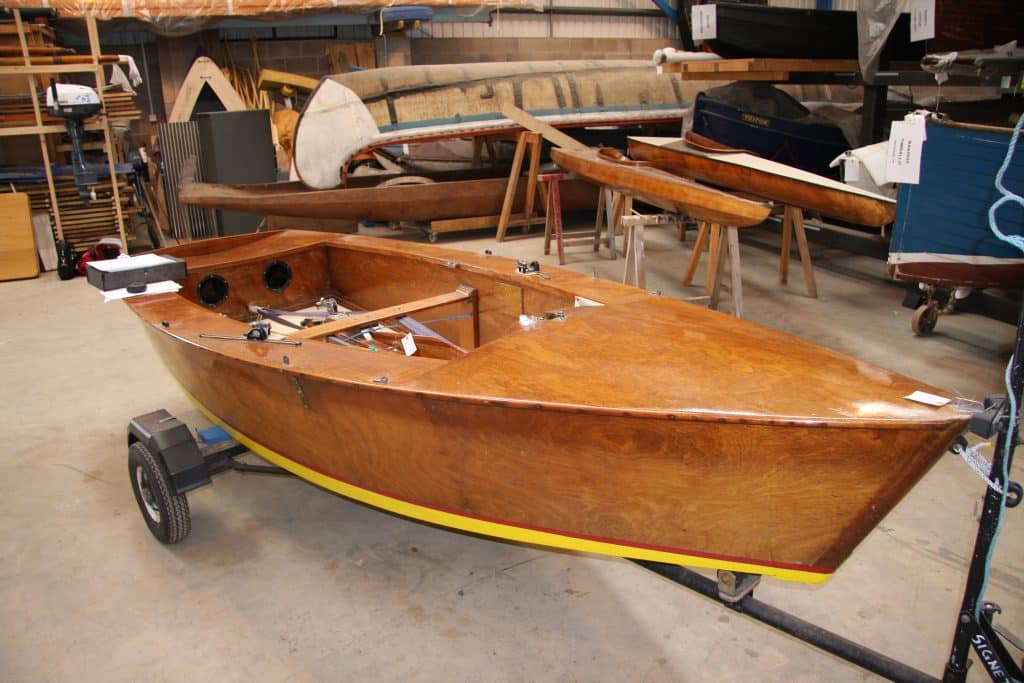
In 1961, at a time when dinghy sailing was hugely popular, the Sunday Times decided to sponsor a dinghy class of its own.
The prime object was, as usual, that the boat should be cheap and easy to build from a kit. It was intended to be a boat for the first time owner/sailor.
In addition to cost was the requirement for the boat to have good performance and handling characteristics, and be suitable for crews of limited experience. Easy maintenance was also desirable, and so the SigneT (S and T of Sunday Times) was created by award winning designer Ian Proctor.
The plywood hull of the SigneT is completely flat bottomed and weighs only 75kg but, due to carefully positioned bulkheads and buoyancy tanks, is extremely strong. The edge of one component panel gives curvature to its neighbouring panel, thereby simplifying construction techniques without having to make complicated compound curves.
All the panels are joined by using screwed and glued battens and the hull could be completed in pre-cut kit form in about 100 hours.
Proctor’s first prototype appears not to have been acceptable to its sponsors, but when prototype 2 was built it had more success. It was from this boat, recently donated to the Museum, that plans were created for another 900 boats. ST2, Half Sovereign, has been sailing since it was first built, and in 1962 made a voyage across the English Channel for publicity purposes. SigneTs are still being built today, professionally, in kit form or from the basic materials and a set of plans.
Dimensions
Length 3.78m
Beam 1.45m
Draft, centreboard down, 1.02m


